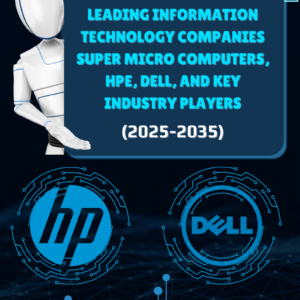1. Executive Summary: Key Insights into the Workload Automation Market
-
- Overview of the workload automation market
- Growth projections and market potential through 2035
- Key competitive dynamics shaping the industry
2. Introduction to Workload Automation Solutions
-
- Definition and importance of workload automation in modern IT environments
- Evolution of workload automation tools and solutions
3. Experience and Industry Landscape
-
- Overview of major players in the workload automation market
- Case studies and examples of successful implementations
- Historical shifts in industry dynamics
4. Competitive Landscape: Key Players and Their Strategies
-
- Analysis of leading workload automation solution providers (e.g., IBM, BMC, Broadcom, Stonebranch)
- Market share distribution and competitive positioning
- Strengths and weaknesses of major vendors
- Emerging players and innovations disrupting the market
5. Market Trends Shaping the Workload Automation Space
-
- Rise of cloud-native automation and hybrid cloud workloads
- Increasing demand for AI and ML-driven automation tools
- Shift towards low-code and no-code automation platforms
- Adoption of RPA (Robotic Process Automation) in workload automation
6. Customer Segmentation in Workload Automation
-
- Enterprise vs. SMB adoption trends
- Key industries driving demand (e.g., financial services, healthcare, manufacturing)
- Regional adoption patterns and trends
- Buyer personas: IT Operations, DevOps, and C-Suite stakeholders
7. Buying Behaviors and Decision-Making Processes
-
- Key factors influencing purchasing decisions for workload automation solutions
- Budget considerations and ROI expectations
- Vendor evaluation criteria: Performance, scalability, and integrations
- Trends in contract structures and pricing models (e.g., subscription vs. perpetual licensing)
8. Technology Advancements Driving Market Growth
-
- The role of AI, ML, and predictive analytics in workload automation
- Advances in orchestration and multi-cloud automation
- Integration with DevOps pipelines and CI/CD environments
9. Challenges and Barriers to Adoption
-
- Common challenges in workload automation implementation
- Resistance to change: Cultural and organizational hurdles
- Managing complexity in multi-cloud and hybrid IT environments
10. Future Outlook for Workload Automation (2025-2035)
-
- Emerging use cases and growth opportunities
- How automation is transforming IT operations and business processes
- Predictions for consolidation and partnerships in the workload automation space
11. Recommendations for Solution Providers and Customers
-
- Strategies for gaining competitive advantage in the workload automation market
- Key considerations for customers in selecting the right workload automation solution
- Long-term investment opportunities in workload automation technology
12. Conclusion: The Road Ahead for Workload Automation
-
- Summary of key takeaways
- Final thoughts on the future of workload automation and its impact on enterprise IT
#WorkloadAutomation #AutomationSolutions #EnterpriseIT #DigitalTransformation #CloudComputing #AI #MachineLearning #DevOps #RPA #ITOperations #CloudNative #HybridCloud #MarketTrends #TechInnovation #CaseStudies #CustomerInsights




